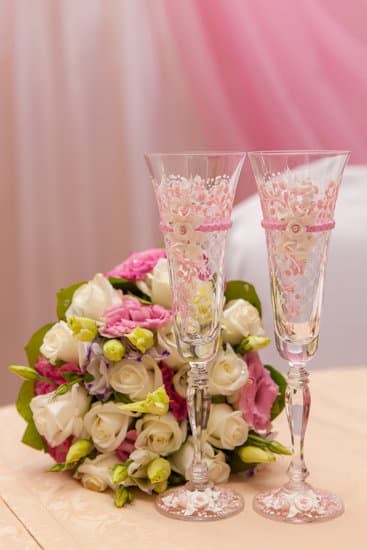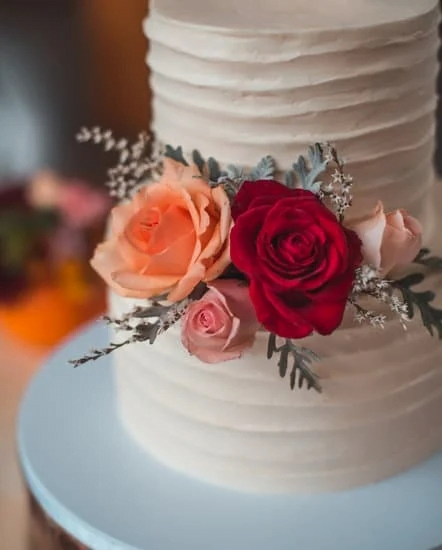Why do they throw rice at weddings? The tradition of throwing rice at weddings has been a longstanding practice in many cultures around the world. This article will explore the history, symbolism, and cultural significance of this age-old tradition. From its historical origins to modern interpretations, we will delve into the controversies, misconceptions, and eco-friendly alternatives associated with throwing rice at weddings.
Throwing rice at weddings is a ritual that holds a deep symbolic meaning and has been passed down through generations. It is a gesture that signifies abundance, fertility, and good fortune for the newlyweds as they embark on their journey together. The act of showering the couple with rice is believed to bring prosperity and blessings to their marriage.
As we examine the historical origins of throwing rice at weddings, we will uncover the cultural significance it holds in different countries. Each culture may have its own specific traditions and customs related to this practice, adding depth and diversity to the age-old tradition. Additionally, we will explore alternative options to throwing rice at weddings and how couples can incorporate this tradition in a more sustainable and eco-friendly way.
The Symbolism Behind Throwing Rice at Weddings
Throwing rice at weddings is a tradition that holds deep symbolic significance across various cultures. This age-old practice is not just a random custom, but it carries meaningful symbolism that adds depth and beauty to the wedding ceremony.
Symbol of Fertility and Prosperity
In many cultures, throwing rice at weddings symbolizes fertility and prosperity for the newlyweds. Rice has long been associated with abundance and nourishment, making it a fitting symbol to wish the couple a fruitful and prosperous marriage. By showering the couple with rice, well-wishers express their hopes for the couple’s future happiness and abundance.
Warding Off Evil Spirits
Another symbolic meaning behind throwing rice at weddings is to ward off evil spirits. In some cultures, loud noises such as the clattering of pots or the tossing of rice are believed to frighten away malicious spirits that may attempt to bring harm to the newlyweds. It is a way for guests to protect the couple from any negativity or malevolent influences as they embark on their new life together.
Unity and Blessings
The act of throwing rice also represents unity and blessings from the community. As family and friends joyously participate in this tradition, they are essentially bestowing their blessings upon the couple, reaffirming their support for their union. The collective act of showering the couple with rice symbolizes the shared wishes for love, happiness, and unity in their marriage journey.
Historical Origins of Throwing Rice at Weddings
The tradition of throwing rice at weddings has been around for centuries, and its origins can be traced back to ancient civilizations. The act of showering the newlyweds with rice is deeply rooted in symbolism and cultural significance, making it an integral part of wedding ceremonies in many parts of the world.
Historically, throwing rice at weddings was believed to symbolize fertility, prosperity, and good fortune for the newly married couple. In some cultures, rice was considered a symbol of abundance and was thought to bless the couple with a bountiful and prosperous life together. This tradition was also seen as a way to ward off evil spirits and bring blessings to the couple as they embarked on their journey as husband and wife.
The practice of throwing rice at weddings can be found in various cultures across the globe, each with its own unique customs and beliefs surrounding this age-old tradition. In Japan, for example, it is customary to throw small bags of uncooked rice over the newlyweds as a symbol of good luck and prosperity. In Italy, confetti or sugared almonds are thrown instead of rice to wish the couple a sweet and joyous marriage.
- Rituals associated with throwing rice at weddings
- Blessings for fertility and abundance
- Warding off evil spirits
- Cultural variations in different countries
As times have changed and environmental awareness has grown, there has been some controversy surrounding the practice of throwing rice at weddings due to concerns about wildlife consuming uncooked grains. However, couples have found eco-friendly alternatives such as birdseed, flower petals, or biodegradable confetti that still capture the essence of showering the bride and groom with blessings without harming the environment.
When incorporating the tradition of throwing rice at weddings in a sustainable way, couples can opt for organic or locally-sourced birdseed that will not pose any harm to wildlife. Additionally, using dried flowers or biodegradable confetti made from natural materials ensures that no harm is done to the environment while upholding this cherished tradition.
By understanding the historical origins and cultural significance behind throwing rice at weddings, couples can honor this timeless tradition in a meaningful way while also being mindful of its impact on the environment. Overall, by incorporating eco-friendly alternatives into this age-old custom, couples can ensure that the tradition lives on while promoting sustainability.
Cultural Significance of Throwing Rice at Weddings in Different Countries
Throwing rice at weddings is a widespread tradition that is observed in various cultures around the world. However, the significance and customs associated with this practice vary from country to country. In many Asian cultures, such as in China and Japan, rice symbolizes fertility, prosperity, and good fortune. Thus, throwing rice at weddings is believed to bring luck and blessings to the newlyweds as they start their journey together.
In Italy, it is traditional to toss handfuls of sugared almonds instead of rice. This custom represents the bitter and sweet moments that couples may encounter in their marriage. The almond’s bitterness signifies the trials and challenges while the sweetness represents the hope for a happy life together. Similarly, in some Middle Eastern countries like Lebanon and Egypt, people throw wheat grains instead of rice as a symbol of abundance and harvest in the couple’s life.
| Country | Significance |
|---|---|
| China & Japan | Rice symbolizes fertility, prosperity, and good fortune. |
| Italy | Sugared almonds represent bitter and sweet moments in marriage. |
| Middle Eastern Countries | Throwing wheat grains symbolizes abundance and harvest in married life. |
| India | “Akshata” or turmeric-coated rice signifies an unhurt life through thick and thin. |
Alternatives to Throwing Rice at Weddings
In today’s modern society, many couples are looking for alternatives to throwing rice at weddings. This traditional practice has come under scrutiny due to concerns about its impact on the environment and wildlife. As a result, there has been a growing trend towards finding more eco-friendly and sustainable options to replace the age-old ritual of tossing rice.
One popular alternative to throwing rice at weddings is using biodegradable confetti made from natural materials such as dried flower petals or leaves. This not only adds a romantic and colorful touch to the celebration but also minimizes the environmental impact compared to traditional rice. Additionally, some couples opt for bubble machines or wands as a fun and whimsical way to create a festive atmosphere without causing harm to the environment.
Another creative alternative is using birdseed for guests to toss in place of rice. Birdseed is not only biodegradable but it also provides nourishment for local birds and wildlife. This option embraces the spirit of fertility and abundance symbolized by rice while being mindful of the ecological consequences.
Many couples are also choosing to incorporate traditions from their cultural heritage or personal values, such as planting a tree together or releasing butterflies, as meaningful alternatives to throwing rice at weddings. These unique and personalized gestures not only add sentimental value but also contribute positively to the environment. Ultimately, these alternatives allow couples to honor tradition while making a positive impact on the planet.
| Alternatives | Environmental Impact |
|---|---|
| Biodegradable Confetti | Minimizes environmental impact compared to traditional rice |
| Birdseed | Provides nourishment for local birds and wildlife |
| Cultural Traditions | Add sentimental value and contribute positively to the environment |
Modern Interpretations of Throwing Rice at Weddings
In modern times, the tradition of throwing rice at weddings has evolved and taken on new interpretations. While the act of showering newlyweds with rice continues to be a popular custom, some couples have put a modern spin on this age-old tradition.
One interpretation involves using eco-friendly alternatives to traditional rice. In an effort to reduce waste and environmental impact, many couples have opted for biodegradable options such as flower petals, birdseed, or even colorful confetti. This not only adds a festive touch to the wedding exit but also minimizes the ecological footprint of the celebration.
Another modern interpretation of throwing rice at weddings is the incorporation of personalized elements. Some couples choose to fill small pouches with rice that has been dyed in their wedding colors or scented with essential oils. This not only adds a unique and personalized touch to the tradition but also creates a sensory experience for both the couple and their guests.
Furthermore, technology has allowed for new ways to capture the moment when rice is thrown at weddings. With the rise of social media and smartphone photography, couples can now create interactive experiences by encouraging guests to tag their photos and videos with a specific hashtag. This allows them to relive the magical moment of being showered with rice from different perspectives while also cherishing these memories for years to come.
Controversies and Misconceptions Surrounding Throwing Rice at Weddings
Throwing rice at weddings has been a long-standing tradition, but it has also been surrounded by controversies and misconceptions. One of the main concerns associated with this tradition is the impact that rice can have on birds who consume it. There is a common belief that if birds eat uncooked rice, it will expand in their stomachs and cause harm. However, this is actually a misconception. In reality, birds are able to digest uncooked rice without any issue.
Another controversy surrounding the tradition of throwing rice at weddings is the potential danger of slipping on the rice grains. While it is true that uncooked rice can be slippery, especially on hard surfaces such as floors or pavement, there are ways to mitigate this risk. Couples can opt for alternatives such as birdseed, flower petals, or biodegradable confetti to avoid any safety hazards for themselves and their guests.
Despite these controversies and misconceptions, throwing rice at weddings continues to hold significant cultural and symbolic value for many people around the world. It is important to understand the origins and meaning behind this tradition before making any assumptions about its implications. The next section will delve into how couples can incorporate the tradition of throwing rice at weddings in a sustainable and eco-friendly way, further emphasizing its meaningful impact beyond mere superstition or custom.
How to Incorporate Throwing Rice at Weddings in a Sustainable and Eco-Friendly Way
Use Eco-Friendly Rice Alternatives
For couples who want to incorporate the tradition of throwing rice at weddings in an eco-friendly way, there are several alternatives to consider. Instead of using traditional rice, which can be harmful to birds if consumed, environmentally conscious options include using birdseed, biodegradable confetti made from natural materials, or even flower petals. These alternatives not only reduce the environmental impact but also provide a colorful and festive celebration for the newlyweds.
Encourage Responsible Cleanup
To ensure that the tradition of throwing rice at weddings is sustainable, it is important to encourage responsible cleanup practices. Couples can provide designated compostable bins or bags for guests to dispose of the rice alternatives after the ceremony. Additionally, hiring a cleaning crew that specializes in eco-friendly waste management can help minimize any residual environmental impact from the wedding festivities.
Educate Guests on Sustainable Practices
Another way to incorporate throwing rice at weddings in a sustainable and eco-friendly way is to educate guests on the importance of responsible and earth-friendly practices. By informing attendees about the potential harm caused by traditional rice throwing and providing alternative options, couples can inspire their loved ones to participate in environmentally conscious activities. This not only promotes sustainability during the wedding event but also encourages guests to adopt eco-friendly habits in their everyday lives.
Conclusion
In conclusion, the tradition of throwing rice at weddings has stood the test of time and continues to hold significant meaning for couples around the world. While the act itself may seem simple, its symbolism and historical roots make it a cherished part of wedding ceremonies. From representing prosperity and fertility to showering the newlyweds with blessings for a long and happy union, throwing rice is a beautiful way for guests to participate in the celebration of love.
Despite controversies and misconceptions surrounding throwing rice at weddings, there are alternatives that couples can consider if they wish to modernize or adapt the tradition to be more eco-friendly. However, it’s important to recognize that this age-old custom holds cultural significance in many countries and remains a beloved aspect of wedding rituals for countless people.
As couples continue to find ways to incorporate sustainable practices into their weddings, there are environmentally friendly options for including throwing rice in the celebration. By using birdseed, flower petals, or even biodegradable confetti, couples can honor tradition while also being conscious of their impact on the environment.
Ultimately, whether couples choose to throw rice or explore alternatives at their wedding, it is essential to respect and understand the meaningful impact behind these traditions as they celebrate their love and commitment.
Frequently Asked Questions
Where Does the Tradition of Throwing Rice at a Wedding Come From?
The tradition of throwing rice at a wedding is believed to have originated in ancient Rome and China. In China, throwing rice symbolized fertility and prosperity, while in Rome, it was seen as a way to bestow good fortune upon the newlyweds.
Why Is Throwing Rice at Weddings Illegal?
Throwing rice at weddings became illegal in some places due to concerns about the potential harm it could cause to birds who would eat the uncooked rice. It was believed that the uncooked rice could expand in the birds’ stomachs and cause harm or even death.
What Is Rice Used for in Weddings?
In weddings, rice is commonly used as a symbol of abundance, fertility, and good fortune for the newly married couple. It is often used during the ceremony as guests throw it over the couple as they leave the ceremony venue, symbolizing well wishes for their future together.

Welcome to my blog about home and family. This blog is a place where I will share my thoughts, ideas, and experiences related to these important topics. I am a stay-at-home mom with two young children. I hope you enjoy reading it! and may find some helpful tips and ideas that will make your home and family life even better!





